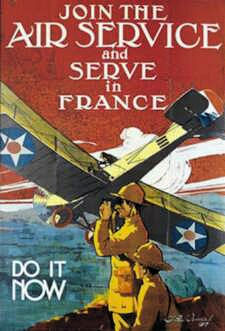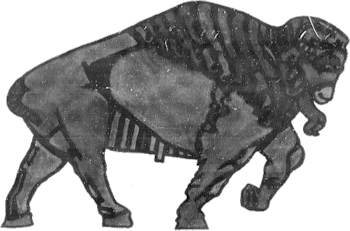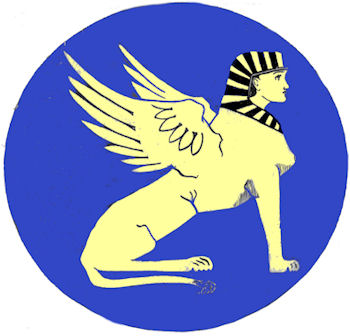|
Belrain Aerodrome
Belrain Aerodrome was a temporary World War I airfield in France. It was located South of Belrain, in the Meuse department in the Lorraine region in northeastern France. Overview Construction of Belrain Aerodrome was originally started by the French "Aeronautique Militaire" on the plateau between Belrain and Erize-la-Brulée, with a few escadrilles stationed between August 1917 and August 1918. When turned over to the Air Service, United States Army in August 1918, the airfield could shelter 86 aircraft in eight "Bessonneau" aircraft hangars; there was no telephone or electrical system, and the Air Service engineers from a detachment of the 484th Aero Squadron (Construct.) put up a series of tents for personnel to live, eat and perform their duties in the early days of September.Series L, Miscellaneous Sections of the Air Service, Volume 11, History of the Design and Projects Section of the Construction Division, Gorrell's History of the American Expeditionary Forces Air Servi ... [...More Info...] [...Related Items...] OR: [Wikipedia] [Google] [Baidu] |
American Expeditionary Forces
The American Expeditionary Forces (A. E. F.) was a formation of the United States Army on the Western Front of World War I. The A. E. F. was established on July 5, 1917, in France under the command of General John J. Pershing. It fought alongside French Army, British Army, Canadian Army, New Zealand Army and Australian Army units against the Imperial German Army. A small number of A. E. F. troops also fought alongside Italian Army units in that same year against the Austro-Hungarian Army. The A. E. F. helped the French Army on the Western Front during the Aisne Offensive (at the Battle of Château-Thierry and Battle of Belleau Wood) in the summer of 1918, and fought its major actions in the Battle of Saint-Mihiel and the Meuse-Argonne Offensive in the latter part of 1918. Formation President Woodrow Wilson initially planned to give command of the A. E. F. to Gen. Frederick Funston, but after Funston's sudden death, Wilson appointed Major General John J. Pershing in Ma ... [...More Info...] [...Related Items...] OR: [Wikipedia] [Google] [Baidu] |
List Of Air Service American Expeditionary Force Aerodromes In France
: ''see also: Organization of the Air Service of the American Expeditionary Force'' When the United States entered World War I on 6 April 1917, the Air Service of the United States Army existed only as a branch of the Signal Corps, and was known by the name of Aviation Section, U.S. Signal Corps. It consisted of 1,120 personnel, of which 65 were officers. The Army was not ready for the deployment of aviation forces to Europe, and it became necessary to prepare after President Woodrow Wilson's declaration of war. Overview As part of the buildup of US forces, aviation units were formed into aero squadrons primarily at Kelly Field, San Antonio, Texas, with additional units being formed at Rockwell Field, San Diego, California. Once formed, and prior to their deployment to Europe, Camp Taliaferro, north of Fort Worth, Texas, and several airfields near Toronto, Ontario, Canada were used by the British Royal Flying Corps (RFC) to perform flight training for the new aero squadrons. ... [...More Info...] [...Related Items...] OR: [Wikipedia] [Google] [Baidu] |
1st Air Depot
Colombey-les-Belles Aerodrome, was a temporary World War I airfield in France used by the Air Service of the American Expeditionary Force. It was located near Colombey-les-Belles, in the Meurthe-et-Moselle department in north-eastern France. Colombey-les-Belles Aerodrome was the location of the 1st Air Depot. It was the largest American facility in the combat zone of the Western Front and arguably, the most important, as the 1st Air Depot supplied and equipped every Air Service unit after their arrival at the front and entered combat. Overview The 1st Air Depot supported operations of 33 combat airfields and 44 squadrons of the Air Service on the Western Front, as well as 23 Balloon Observation companies. There were a total of 950 aircraft with those squadrons, and 566 at the 1st Air Depot. Of the front-line combat squadrons, 38 were fully equipped by the 1st Air Depot. The depot supplied airplanes, flying personnel, transport and drivers, munitions and armament, radio an ... [...More Info...] [...Related Items...] OR: [Wikipedia] [Google] [Baidu] |
90th Aero Squadron
The 90th Aero Squadron was an Air Service, United States Army unit that fought on the Western Front during World War I. The squadron was assigned as a Corps Observation Squadron, performing short-range, tactical reconnaissance over the III Corps, United States First Army sector of the Western Front in France, providing battlefield intelligence. After the 1918 Armistice with Germany, the squadron returned to the United States in May 1919 and became part of the permanent United States Army Air Service in 1921, being re-designated as the 90th Squadron (Surveillance).Series "E", Volume 9, History of the 72d, 73d, 85th, and 88th–90th Aero Squadrons. Gorrell's History of the American Expeditionary Forces Air Service, 1917–1919, National Archives, Washington, D.C.(1988 Reprint), Order of Battle of the United States Land Forces in the First World War, Volume 3, Part 3, Center of Military History, United States Army The current United States Air Force unit which holds its lineage a ... [...More Info...] [...Related Items...] OR: [Wikipedia] [Google] [Baidu] |
99th Aero Squadron
The 99th Aero Squadron was an Air Service, United States Army unit that fought on the Western Front during World War I. The squadron was assigned as a Corps Observation Squadron, performing short-range, tactical reconnaissance over the V Corps, United States First Army sector of the Western Front in France, providing battlefield intelligence. After the 1918 Armistice with Germany, the squadron returned to the United States in June 1919 and became part of the permanent United States Army Air Service in 1921, being re-designated as the 99 Squadron (Observation).Series "E", Volume 15, History of the 97th-102d Aero Squadrons. Gorrell's History of the American Expeditionary Forces Air Service, 1917–1919, National Archives, Washington, D.C.Order of Battle of the United States Land Forces in the First World War, Volume 3, Part 3, Center of Military History, United States Army, 1949 (1988 Reprint) The current United States Air Force unit which holds its lineage and history is the 99t ... [...More Info...] [...Related Items...] OR: [Wikipedia] [Google] [Baidu] |
104th Aero Squadron
The 104th Aero Squadron was an Air Service, United States Army unit that fought on the Western Front during World War I. The squadron was assigned as a Corps Observation Squadron, performing short-range, tactical reconnaissance over the V Corps, United States First Army sector of the Western Front in France, providing battlefield intelligence. After the 1918 Armistice with Germany, the squadron returned to the United States in June 1919 and became part of the permanent United States Army Air Service in 1921, when it was redesignated as the 13th Squadron (Attack) .Order of Battle of the United States Land Forces in the First World War, Volume 3, Part 3, Center of Military History, United States Army, 1949 (1988 Reprint) The current United States Air Force unit which continues its lineage and history is the 13th Bomb Squadron, assigned to the 509th Operations Group at Whiteman Air Force Base, Missouri. History The 104th Aero Squadron was organized on 25 August 1917. The unit w ... [...More Info...] [...Related Items...] OR: [Wikipedia] [Google] [Baidu] |
V Corps Observation Group
The V Corps Observation Group was an Air Service, United States Army unit that fought on the Western Front during World War I as part of the Air Service, First United States Army. It was demobilized in France on 15 February 1919. There is no modern United States Air Force unit that shares its lineage and history. Mission The mission of the group was primarily to keep the friendly command informed of the general situation within the enemy lines by means of visual and photographic reconnaissances. It was called upon to effect, whenever necessary, the adjustment of U.S. Army artillery fire. In addition, it was expected that the group would serve to complete the schooling of pilots and observers and render them more competent to undertake intensive operations elsewhere on a larger and more complete scale. History Created on 1 August 1918, it was organized at Luxeuil-les-Bains Aerodrome, France with the 99th and 104th Aero Squadrons on 7 August. At the time of organization, the 99 ... [...More Info...] [...Related Items...] OR: [Wikipedia] [Google] [Baidu] |
Souilly Aerodrome
Souilly Aerodrome was a temporary World War I airfield in France. It was located Northeast of Souilly, in the Meuse department in north-eastern France. Overview With the Battle of Verdun raging on in the early part of 1917, a cluster of new airfields were built for the benefit on the French Air Service north of Souilly, sheltered by the forest of Souilly, such as Souilly, Lemmes or Julvécourt, which were to be used in 1918 by the American Air Service. Early in September 1918, a detachment of 484th Aero Squadron (Construct.) arrived on the airfield to make some improvements, as a French fighter "escadrille" - SPA 23 - was still flying from Souilly for the benefit of the American First Army. V Corps Observation Group arrived on 7 September, with HQ, 99th Aero Squadron and 104th Aero Squadron, but it soon left for the Foucaucourt Aerodrome, on 20 September, flying observation/reconnaissance missions for the United States First Army. 88th Aero Squadron showed up 12–14 Septem ... [...More Info...] [...Related Items...] OR: [Wikipedia] [Google] [Baidu] |
22d Aero Squadron
The 22nd Aero Squadron was a United States Army Air Service unit that fought on the Western Front during World War I. The squadron was assigned as a Day Pursuit (Fighter) Squadron as part of the 2nd Pursuit Group, First United States Army. Its mission was to engage and clear enemy aircraft from the skies and provide escort to reconnaissance and bombardment squadrons over enemy territory. It also attacked enemy observation balloons, and perform close air support and tactical bombing attacks of enemy forces along the front lines. After the 1918 Armistice with Germany, the squadron returned to the United States in June 1919 and was demobilized. In April 1937, its lineage and history was consolidated with those of the United States Army Air Corps 22nd Observation Squadron.Order of Battle of the United States Land Forces in the First World War, Volume 3, Part 3, Center of Military History, United States Army, 1949 (1988 Reprint) History Origins The 22nd Aero Squadron was organ ... [...More Info...] [...Related Items...] OR: [Wikipedia] [Google] [Baidu] |
139th Aero Squadron
The 139th Aero Squadron was a United States Army Air Service unit that fought on the Western Front during World War I. The squadron was assigned as a day pursuit (fighter) squadron as part of the 2d Pursuit Group, First United States Army. Its mission was to engage and clear enemy aircraft from the skies and provide escort to reconnaissance and bombardment squadrons over enemy territory. It also attacked enemy observation balloons, and performed close air support and tactical bombing attacks on enemy forces along the front lines. The squadron was very successful in combat, having half a dozen air aces including David Putnam, Karl Schoen, Robert Opie Lindsay, and future Brigadier General Harold H. George. After the 1918 Armistice with Germany, the squadron returned to the United States in June 1919 and was demobilized.Series "E", Volume 17, History of the 104th–147th Aero Squadrons. Gorrell's History of the American Expeditionary Forces Air Service, 1917–1919, Natio ... [...More Info...] [...Related Items...] OR: [Wikipedia] [Google] [Baidu] |
49th Aero Squadron
The 49th Aero Squadron was a United States Army Air Service unit that fought on the Western Front during World War I. The squadron was assigned as a Day Pursuit (Fighter) Squadron as part of the 2d Pursuit Group, First United States Army. Its mission was to engage and clear enemy aircraft from the skies and provide escort to reconnaissance and bombardment squadrons over enemy territory. It also attacked enemy observation balloons, and perform close air support and tactical bombing attacks of enemy forces along the front lines. After the 1918 Armistice with Germany, the squadron returned to the United States in March 1919 and was demobilized. On 16 October 1936, the World War I Aero squadron was consolidated with the United States Army Air Corps 49th Bombardment Squadron to preserve the lineage and history of the unit. Today, the United States Air Force 49th Test and Evaluation Squadron performs flight testing at Barksdale Air Force Base, Louisiana. [...More Info...] [...Related Items...] OR: [Wikipedia] [Google] [Baidu] |
.png)








